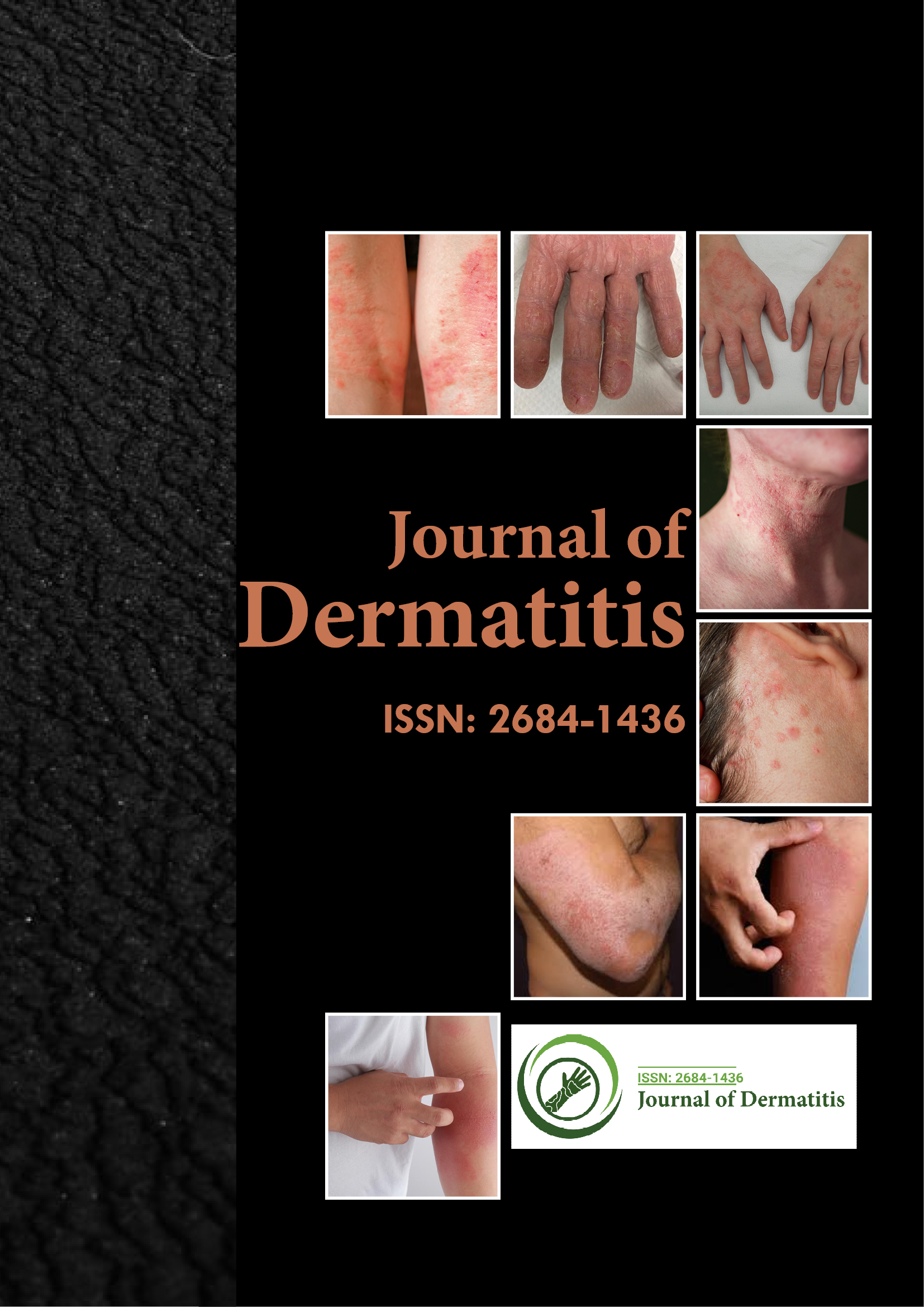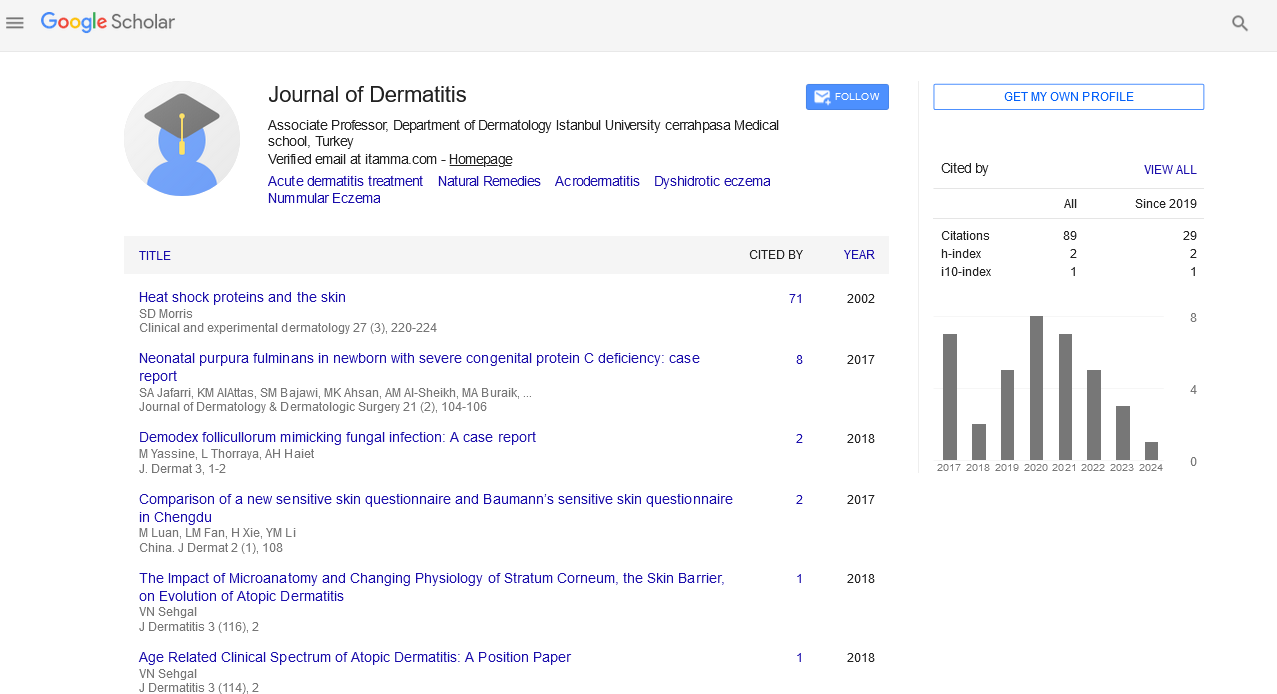Indexed In
- RefSeek
- Hamdard University
- EBSCO A-Z
- Euro Pub
- Google Scholar
Useful Links
Share This Page
Journal Flyer

Open Access Journals
- Agri and Aquaculture
- Biochemistry
- Bioinformatics & Systems Biology
- Business & Management
- Chemistry
- Clinical Sciences
- Engineering
- Food & Nutrition
- General Science
- Genetics & Molecular Biology
- Immunology & Microbiology
- Medical Sciences
- Neuroscience & Psychology
- Nursing & Health Care
- Pharmaceutical Sciences
Perspective - (2024) Volume 9, Issue 1
Hormonal and Antibiotic Therapies for Severe Acne
Harish Varma*Received: 02-Mar-2024, Manuscript No. JOD-24-26014; Editor assigned: 05-Mar-2024, Pre QC No. JOD-24-26014 (PQ); Reviewed: 21-Mar-2024, QC No. JOD-24-26014; Revised: 27-Mar-2024, Manuscript No. JOD-24-26014 (R); Published: 05-Apr-2024, DOI: 10.35248/2684-1436.24.9.231
Description
Treatments for acne vulgaris in adults and teenagers might vary depending on the patient's needs and the severity of the condition. Retinoids, such as tretinoin and adapalene, are useful in increasing cell turnover and preventing pore obstruction; hence, topical therapies are frequently the first line of treatment. Salicylic acid aids in skin exfoliation and reduces inflammation, whereas benzoyl peroxide is frequently utilized for its antimicrobial qualities.
In the event that conventional treatments are ineffective, hormonal and antibiotic medications become important for the management of severe acne. Cutibacterium acnes is the focus of oral medicines such as doxycycline and minocycline, which decrease inflammation and bacterial proliferation. Hormonal medications, including spironolactone and oral contraceptives, help women with acne by addressing hormonal imbalances. Skin condition is much improved by these therapies, which also control testosterone levels and reduce sebum production. The efficacy and security of these treatments are guaranteed by close medical supervision. Managing severe acne and averting recurrences can be achieved by combining these methods with lifestyle changes such as eating a balanced diet and using suitable skincare products.
Oral antibiotics like minocycline and doxycycline are used for moderate-to-severe acne in order to reduce inflammation and bacterial overgrowth. Women who have acne because of variations in their hormones benefit most from hormonal therapies, such as spironolactone and oral contraceptives. Isotretinoin is a potent oral retinoid that may be used under strict physician care when standard therapies fail. Furthermore, lifestyle changes like stress management, eating a balanced diet, and following a good skincare regimen can improve the efficacy of medical treatments and help avert breakouts in the future. Combining these methods provides a thorough plan for efficiently managing and treating acne vulgaris.
Acne vulgaris typically affects the sebaceous glands in teenagers and adults and presents as inflammatory skin lesions. Cutibacterium acnes is an anaerobic bacteria that mostly causes acne and its unchecked growth. Cutibacterium acnes hydrolyzes neutral lipids into free fatty acids, which promote oxidative stress, inflammatory reactions, and tissue damage. Acne vulgaris is more likely to produce sebum under oxidative stress, have dead skin cells, and may experience anaerobic conditions.
In addition to weakening skin barriers and encouraging the growth of Candida albicans, oxidative stress also increases inflammation, both of which are factors in the development of acne. Furthermore, cutibacterium acnes interacts with several components of the immune system. Furthermore, the aerobic bacterium Staphylococcus aureus multiplies in acne lesions and causes inflammatory skin diseases by secreting enzymes and extracellular chemicals.
Kimchi, a classic Korean meal made with fermented fish sauce, pepper, garlic, ginger, and cabbage, is the most well-known. Along with vitamins, minerals, dietary fiber, and other organic acids, lactic, citric, acetic, and succinic acids are produced during the fermentation process of kimchi. When compared to other fermented vegetable meals, the nutritional components of kimchi are diverse. This gives kimchi advantages such as antiaging, probiotic, cholesterol-lowering, anti-inflammatory, and anti-obesity.
Throughout the fermenting process, LAB such as Lactobacillus, Leuconostoc, Pediococcus, and Weissella help to produce the unique flavor and taste of kimchi. Early in the fermentation process, heterofermentations such as Weisella and Leuconostoc begin to rise. Following the fruit's peak ripening period, fermentation proceeds through homofermentation involving Lactobacillus, leading to a rapid rise in lactic acid levels. The more lactic acid present, the more acidic Kimchi's habitat gets. Controlling pathogenic and putrefactive bacteria becomes possible as a result.
It is commonly recognized that Lactic Acid Bacteria (LAB) control the host's inflammatory response and microbiological interactions. Fermented foods are the source of LAB, which have been selected and isolated due to their long history of safe use. Numerous studies claim that the Lactobacillus strain supports skin health activities such as anti-aging, skin moisturization, and the alleviation of atopic dermatitis.
Research has not yet been done to determine how well LAB works to treat acne. Furthermore, the majority of earlier studies on LAB's anti-acne properties have focused on its antimicrobial activity against acne-causing bacteria. Therefore, more study is needed to determine whether LAB can stop the cause of acne. Considering this, the effects of LAB on anti-inflammatory and antibacterial properties were investigated in this study as possible remedies for acne vulgaris.
Citation: Varma H (2024) Hormonal and Antibiotic Therapies for Severe Acne. J Dermatitis. 9:231.
Copyright: © 2024 Varma H. This is an open-access article distributed under the terms of the Creative Commons Attribution License, which permits unrestricted use, distribution, and reproduction in any medium, provided the original author and source are credited.

